By DeShauna Hollie
I have a soap box that I’ve been silently standing on for a few years now. I stepped up on to it timidly and shyly, afraid of what would happen if I said these words out loud:
“My skin is not a crisis or a trauma that needs to be fixed or saved. Please stop trying to save me. I am not on trajectory of self-destruction simply because I was born black. Neither are any of the black children in our schools and in our community. Please stop trying to save them. Please stop treating them as if they are on a trajectory of self-destruction just by being born with black skin.”
I’ve gotten louder and bolder with my words, but the implications of what could happen to me and those in my community by me saying these words out loud still scares me. The crisis and trauma doesn’t lie within my skin color. I repeat that my skin color does not need saving. A broken system that allows systemic racism to prevail is the crisis and trauma that needs saving.
So, I say a little louder, a little bolder “All the effort focused on saving my skin color and others like me (born with black or brown skin), all of the effort focused on fixing our skin color should be refocused on the systems of racism and injustices that prevail in our society.” I say this after a white supremacist march in Charlottesville. I say this after SB4 (“Sanctuary City” Bill) was almost implemented. I say this after the announcement of the phasing out of DACA: “our skin color, does not need saving or fixing. We are not broken; the system is broken.”
Recently I took a trip to visit friends in Portland, Oregon. On that trip, I was reminded of another soap box that I like to stand on. On this soap box, I am bolder and less hesitant as I describe all the things that I have been able to be a part of in Waco. My friends were transfixed as I described my life here in Waco.
On this soap box, I like to talk about how easy it is to eat local in Waco, especially when farms like the World Hunger Relief Farm offer a whole farm CSA (it includes vegetables, meat and eggs and fun products like goat’s milk soap and lip balm). I like to talk about how I can commute to work and other places on my bike or by using our public transit system (an all-day pass is $3). On this soap box, I also talk about how accessible our city council is, how accessible our school board is and how easy it is to be a part of the growth and change happening in the many diverse communities that make up our city.
On this soap box, I am reminded that even though there is a broken system that allows racism and injustice to prevail there is also an alternative to that system that we are working towards in Waco.
While in Portland I saw a great yard sign that said:

I was so enamored with the version of America portrayed on the sign, that I bought one for my own yard. It is a message that I have seen modeled time and time again in our city of Waco. As Waco changes and grows I hope that “In Our Waco” we will continue to work on fixing a broken system. I hope that we will continue to work to model what it means to be a welcoming city, an inclusive city, a city were racism and injustice does not prevail. I’ll step down from my soap boxes now. Thank you for listening.
 DeShauna Hollie is a native Wacoan who love discovering new things about Waco on her bike. She is an an educator, social justice advocate, and a poet.
DeShauna Hollie is a native Wacoan who love discovering new things about Waco on her bike. She is an an educator, social justice advocate, and a poet.
By Angel Jackson
I moved to Waco in 2010 and I spent my time there working towards moving away. That sounds horrible, but it had nothing to do with Waco itself. My husband was there to get his PhD at Baylor and the point of that program is to finish it! Waco, it turns out, was also very far from our Midwest family and friends.
The first few months were really hard, as I stayed home with our young daughter, but eventually I started my internship in ministry at St. Matthew Lutheran Church. There I found amazing folks who began to show me the best of what Waco had to offer. I made friends at Baylor who are still very dear.
Still, the goal of an internship is a job. The goal of school is to graduate. I did a long-distance interview with a congregation in Ohio and eventually got the job. Eagerly, I packed our kids (we added a son in the meantime) and our stuff and headed “home.” When people around here ask me what it was like to live in Waco I usually say, “it’s a fine place, just hot and very far from here.”
About a month ago I heard through Facebook that there was going to be a conference of women preachers in Waco. I had been searching for continuing education. It’s late in the year and I still had some budget left. Good friends confirmed that they would be going, so without overthinking it, I bought a ticket and arranged for travel.
Two lines into the beautiful welcoming statement at the opening worship of the “Unauthorized: Nevertheless She Preached” conference, I had tears in my eyes. I didn’t know how desperately I needed just this place and these people until I was standing there. The line-up was full of inspired, strong, dynamic women. I was delighted with the chance to hear from so many people with different experiences, different backgrounds, different challenges and different gifts. When they shared their hard and beautiful stories I saw Jesus, and the crowd was full of both men and women who practice spotting Jesus in places our society overlooks. I would not have missed a minute of this gathering and it was well worth the 1,221 miles I traveled to get here (by plane of course!)
Fed by my time at the conference, I also got to explore Waco again! Coming into town from Dallas down I-35, I was surprised by the bold statement that the Baylor stadium makes, all of that was different last time I was in town! I met up with a dear friend for dinner at Rudy’s, which as far as I can tell, hasn’t changed a bit. I made my husband salivate from afar with a photo at Taco Zs with their new (at least since our late night burrito days) stand.
I visited the little house on Huaco Lane where we made family memories. I found magnets that had fallen under the fridge during our time there. The various graduate students and young professionals that have rented it from us since we moved have taken great care of it! (It will be up for sale soon if you are looking for a good starter house!)
Dinner at Buzzard Billy’s, as usual, did not disappoint. I had my favorites, including the bread pudding, which of course I took home for later. The view was the same, except for the sidewalk that heads right out into the river to skirt the deck. It’s a very cool thing to walk all along the river and right to the stadium. I also experienced the Hippodrome for the first time for a Jennifer Knapp concert as part of the conference and was impressed with the space.
As I sat in front of Common Grounds realizing that a Cowboy Coffee was much better suited as fuel for the time in my life when I was a sleep deprived new mom of a toddler and infant also trying to do campus ministry, than it is for a day of driving/sitting in an airport and airplane/driving again, I was so very, very grateful for Waco. Grateful for the people and places that were an important part of my life. Grateful for the new people I had met and the changes taking place. Grateful for Natalie Webb and Kyndall Rothaus and all of the women who did so much to put this conference together. Very, very grateful that they have announced that Unauthorized: Nevertheless She Preached will take place again next year! See you then, Waco!
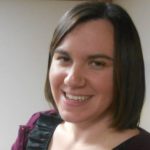 Angel Jackson is the pastor of St. John Lutheran Church, McZena, Ohio. She was a pastoral intern at St. Matthew Lutheran Church in Waco and the interim Missioner at Canterbury House, the Episcopal Student Center near Baylor. She loves parenting (most of the time) and reading and is passionate about women’s voices and radical hospitality.
Angel Jackson is the pastor of St. John Lutheran Church, McZena, Ohio. She was a pastoral intern at St. Matthew Lutheran Church in Waco and the interim Missioner at Canterbury House, the Episcopal Student Center near Baylor. She loves parenting (most of the time) and reading and is passionate about women’s voices and radical hospitality.
by Jeanne Dittmann
Hallways transformed
Art hanging, illuminating
Spaces filled
Offerings given
For seven years, St. Matthew Lutheran Church has hosted Art as Worship: A Gallery Exhibition and Benefit, fulfilling our Fine Arts Ministry’s mission to worship our Creator God and foster creativity in our community. We hope that you will join us this year in this artistic ministry event.
Each year, the committee selects a theme and invites artists – young and old, near and far, professionals and hobbyists – to respond to the theme through art. This year’s theme is MYSTERY, past themes have included RENEWAL, LIGHT, and REFLECTION. The theme is posted along with application information on our blog early each year to give artists several months to consider the theme and make plans to create their response. As the deadline approaches each fall, the committee eagerly anticipates the next stage in the annual event.
The bare walls of our church’s hallways go largely unnoticed through the year, as the unobtrusive gallery hanging system hides in plain sight when not in use. The art curators – Jeanne Dittmann and DeAnna Toten Beard – gather the submitted pieces, admire the artistry in each, and set to work. We plan out how to highlight each piece of art within the context of the larger exhibit. Then we hang, straighten, and illuminate each piece. Artist statements and gallery information are posted alongside each work. The food is set out and the lounge space is assembled. The musicians arrive and prepare their own creative contribution. And then we wait.
We wait for the doors to open and for our guests to enter into this transformed space. Although the artwork will hang for several weeks, there is nothing like seeing it all together for the first time on that special gallery evening. Our hallways fill with expectant congregants and friends and family and artists and worshippers. People nibble on their hors d’oeuvres, sip their wine, and chat about the images and the meaning of what they are seeing. Oftentimes there are new artists who have never before displayed their work in an exhibit. We love to see their eager faces as they approach their own art in this setting, a moment when their personal sense of their own creativity is expanded. And then they begin to look carefully at the other art, and other patrons take their places in front of that first piece of art. And this process of viewing art, reading the artist’s words, examining the details, and moving to the next piece quickly fills the evening.
And while the artistic community is coming together around the art and enjoying the live music, we also ask that same community to reach beyond themselves. We invite our visitors to bring canned goods or make a monetary donation to the Caritas Food for Families drive that brings the larger Waco community together each November. In this way, art brings people together in a creative worshipful environment, and in response to that environment, we reach out to others in a gesture of love.
If you are interested in participating in this year’s Art as Worship exhibit, please visit our blog to fill out an application. The exhibit is open to artists working in all media. Entries must be original artwork and must be consistent with the show theme. Each applicant may submit up to two works. Artwork must be framed with sturdy wire across the back for hanging. The St. Matthew Fine Arts Ministry reserves the right to reject work that is deemed inappropriate or which differs from the submitted image. Works do not need to be explicitly Christian in nature.
There is no entry fee. Each artist may submit up to 2 works. 3D works are allowed with up to two images per entry (no more than 4 images total). All images must accompany the completed application information. The submission deadline is October 16, 2017.
The opening gala will be held on Saturday, November 4 from 6:30 – 9:00pm at St. Matthew Lutheran Church at 800 North New Road in Waco, Texas. Please plan to join us for art, music, hors d’oeuvres, and fellowship. The artwork will hang throughout the Thanksgiving, Advent, and Christmas seasons. If you cannot attend the opening gala, the exhibit will be open on Sunday mornings and during the week if someone is in the office. Please call the church office (254-772-9349) if you wish to come during the week.
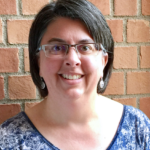 Jeanne Dittmann is a calligrapher and graphic designer who has worked as a freelance artist in Waco for over 14 years. She serves currently as President of the Waco Calligraphy Guild, and she teaches calligraphy through Baylor University Continuing Education. Her day job is the Box Office and Marketing Manager for the Baylor University Theatre. Jeanne and her family attend St. Matthew Lutheran Church, where she and DeAnna Toten Beard started the Fine Arts Ministry 8 years ago. For more information, please contact her at [email protected]
Jeanne Dittmann is a calligrapher and graphic designer who has worked as a freelance artist in Waco for over 14 years. She serves currently as President of the Waco Calligraphy Guild, and she teaches calligraphy through Baylor University Continuing Education. Her day job is the Box Office and Marketing Manager for the Baylor University Theatre. Jeanne and her family attend St. Matthew Lutheran Church, where she and DeAnna Toten Beard started the Fine Arts Ministry 8 years ago. For more information, please contact her at [email protected]
The Act Locally Waco blog publishes posts with a connection to these Aspirations for Waco. If you are interested in writing for the Act Locally Waco Blog, please email [email protected] for more information.
By John Kinnaird
Since the inception of the Prosper Waco initiative, there have been three main areas of focus in working towards improved outcomes for all of those in our community: Health, Education, and Financial Security. As a community volunteer on several local boards, I’ve had the privilege of being closely involved with the Financial Security aspect of their initiative, which has also proven to be the most nebulous and difficult to define of the three focus areas. The overarching goal of improving the general wealth of our citizens is noble, but also difficult to quantify and track, and the path to that goal more winding than one would think.
Specific programs identified and supported to this point have mainly focused on the economic development and income-oriented aspects of wealth creation; i.e. how do we help people get jobs, and once they have them, how do we help keep them in that job and continue working towards even better-paying opportunities down the road? Also contained in this line of thought is financial literacy, which aims to assist folks in making better decisions with the money they have, and education on how to budget expenses and learn to live within one’s means.
Well, I feel there is also great opportunity to help find ways to address the expense side of the equation, and work to devise ways of lowering the everyday costs that go along with daily life. One of these that affects everyone, homeowners and renters alike, is the electric bill.
Texas has a deregulated electricity market, which means consumers get to pick which company provides them with their electricity. The idea behind deregulation is that an open market promotes competition, which in turn lowers costs and benefits the consumer. Unfortunately, picking an electric provider and the right plan can be a difficult and confusing maze to navigate, often resulting in sub-optimal outcomes and worse and more expensive plans being chosen than what someone could potentially obtain if they were able to understand all the nuances of the options available.
Enter a new initiative to address this problem, Waco Power Switch. Provided by a company called iChoosr who is partnering with Prosper Waco, this company aims to use the power of group bargaining to get a straightforward, cheaper price than what most consumers would be able to get on their own, while serving as an advocate for the consumer in negotiating and dealing with the electric company.
The process is simple: if someone is interested, they go to www.prosperwaco.org and register to be part of Waco Power Switch by providing some basic information. Then, iChoosr will take everyone that signs up and hold a reverse auction where electric companies will bid to be the electric provider to this group of consumers. The low bidder wins, and then everyone that signed up has the option, but NO obligation, to accept the contract. If the consumer doesn’t like the price obtained, they don’t have to take it. There’s no risk in signing up, and no obligation if someone ends up not wanting to switch.
There is a caveat, though. The electric company still retains the right to perform its due diligence, meaning credit checks, on the prospective customers who have signed up through Waco Power Switch. That means if someone has a poor payment history, or other credit problems, the electric company still has the right to request a deposit or some other type of extra step before accepting someone as a customer.
That said, other benefits do accrue to people who elect to receive their electric provider through this program. IChoosr will continue, through the life of the contract, to serve as a go-between for the consumer and the electric company. So, should there be a billing problem or some other issue, iChoosr will help resolve it and serve as a consumer advocate on behalf of the customer, which can be very helpful when dealing with a utility company.
This program has been very successful in England, with the average consumer saving around $250 per year. While on the surface that may not sound like a lot, if only ten percent of Waco households signed up and recognized this average savings, it would amount to around $1 million that would be in our citizens’ pockets instead of going to the utility company. This is an easy win for our citizens, and for the community.
This program is one step towards making life simpler for our community, and helping people save money on a recurring expense that has ample opportunity for greater efficiencies and savings. I’d encourage anyone who is interested to at least sign up and try it out. There’s no obligation, and you might just be able to save some money and find dealing with the electric company a little easier. It’s a good start towards helping people save and grow their overall wealth, and that can only be a good thing.
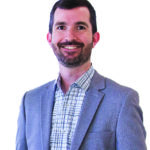 John Kinnaird came to Waco in 1998 to attend Baylor University. After graduation, John was hired at Community Bank & Trust as a Credit Analyst. In his 15 years at Community he has risen to the position of Vice President and Trust Officer. John was elected to Waco City Council in May 2012. In addition to civic-related duties, John finds times to volunteer and take advantage of the disc golf courses and other activities that Cameron Park has to offer.
John Kinnaird came to Waco in 1998 to attend Baylor University. After graduation, John was hired at Community Bank & Trust as a Credit Analyst. In his 15 years at Community he has risen to the position of Vice President and Trust Officer. John was elected to Waco City Council in May 2012. In addition to civic-related duties, John finds times to volunteer and take advantage of the disc golf courses and other activities that Cameron Park has to offer.
The Act Locally Waco blog publishes posts with a connection to these Aspirations for Waco. If you are interested in writing for the Act Locally Waco Blog, please email [email protected] for more information.
By Louise Henderson
In the wake of a hurricane affecting South Texas and Louisiana I am resolved that we as a community can do many great things when we work together. We can have an impact on our community when we get our resources, manpower, and knowledge together. For five days I waited like other families for my relatives in the hurricane affected areas to respond, but as time passed I realized I could do more. So instead of worrying, I gathered what I had and asked other friends and neighbors to do the same. Within a few hours Trail Riders, Motorcycle Clubs, Social Clubs, and churches were able to load several trucks and send them not only to Houston but to other parts of South Texas.
So why can’t we have that same impact in our communities where we live? We can as groups start to come to together to combine all our talents to do health fairs, to share information about resources, to help those that are elderly and low incomes.
I am seeing a shift in attitude from “ I am only going to help if it benefits me” to “ I need to start doing more and working with others to make a change in my neighborhood.” Groups are working systemically with each other to impact small areas of Waco. For instance, there are four different groups that have decided they can reach more children and families by collaborating their efforts and supporting each other in the Estelle Maxey apartments. Trail Riders and Motorcycle Clubs are starting to work to host back-to-school events that reach larger quantities of families. These are the types of changes we are seeing from groups working together.
I work with Kindergarten children and there is a story that most early childhood teachers read to their children it’s called “Stone Soup.” It’s about a group that is hungry and so they convince the people in the town to start bringing the little bits of food they are keeping to themselves to contribute to one big pot of soup that everyone can enjoy. Sometimes we have to realize that even with the little you have you can feed a lot of people.
There are so many great groups and orgazianations we don’t know about but are doing duplicate things. My hope is that we will see that if we stop waiting on outside help to come and start working together as a community we can rebuild our city. With so many changes taking place we have forgotten that your neighbor is not just the person who lives next door, they are also the ones that we see on the streets of downtown and everywhere. We can achieve a level of self-sufficiency if we would take the time to realize that when we work as one unit, and not against each other, we can not only reach the stars, we can go the Milky Way! Age, gender, and social status are no longer excuses for us not to actively take part in what is happening in our community. What happens in East Waco will and can affect what is happening in China Spring and Woodway. We can do this. We can make this Happen. If we come together and make this Happen.
 Louise Henderson has four daughters — one at Texas A&M (Elizabeth), two at University High School (Rachel and Naomi) and one at Cesar Chavez Middle School (Rebecca) — and puppy named Rico. She and her family have lived in Waco for six years and are very active in our community. She is a member of the Junior League of Waco, NAACP of Waco, and Waco Knight Riders. She graduated from McLennan Community College with an Associate’s Degree in Child Development and is working towards a Bachelor’s degree in Child and Family studies at Tarleton State University. She loves Taco Tuesday at Rosas Café and volunteering in Waco. She is the founder of the Central Texas Divas, a social club for women and young girls to empower and educate about them about self-improvement and our community.
Louise Henderson has four daughters — one at Texas A&M (Elizabeth), two at University High School (Rachel and Naomi) and one at Cesar Chavez Middle School (Rebecca) — and puppy named Rico. She and her family have lived in Waco for six years and are very active in our community. She is a member of the Junior League of Waco, NAACP of Waco, and Waco Knight Riders. She graduated from McLennan Community College with an Associate’s Degree in Child Development and is working towards a Bachelor’s degree in Child and Family studies at Tarleton State University. She loves Taco Tuesday at Rosas Café and volunteering in Waco. She is the founder of the Central Texas Divas, a social club for women and young girls to empower and educate about them about self-improvement and our community.
by Donald Felice
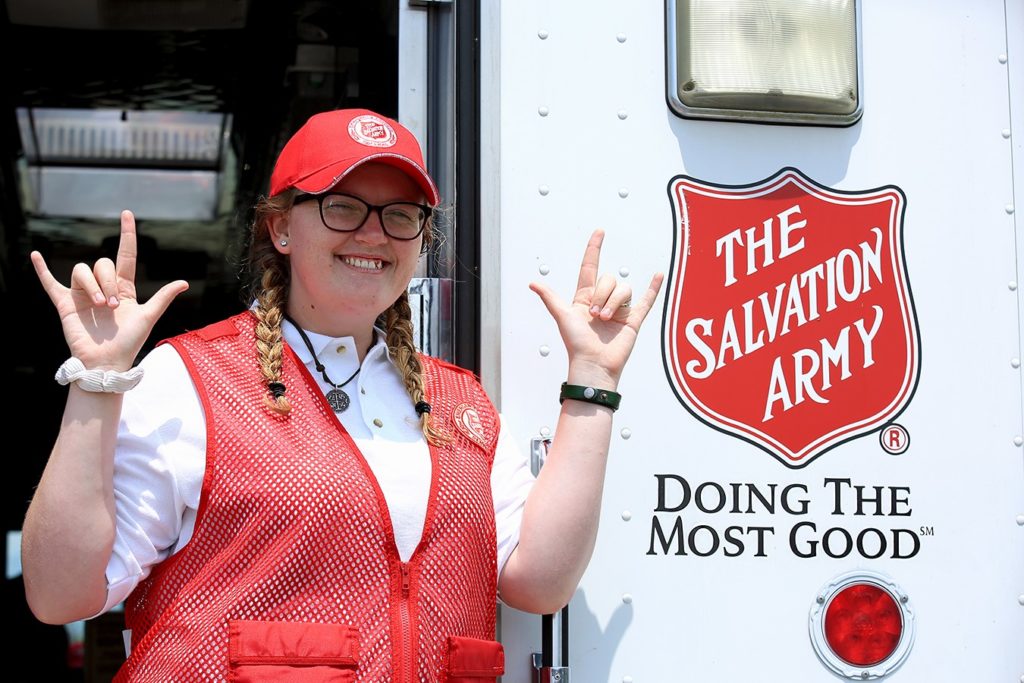
Laura Stevenson of Waco, TX, communicates “love” in sign language.
Hope is an amazing thing. It can take a person by the hand and lead them out of the depths of despair. It can raise up a community out of unthinkable disaster. And it can bless us with immeasurable spiritual riches in the midst of desperate times.
When Hurricane Harvey hit the tiny coastal town of Port Lavaca, Texas, many people found themselves dazed and confused. In the aftermath of the storm, their little community was left for a time with no power, tainted water, and scarce, if any, word as to how bad the situation was in their little corner of Texas. Uncertainty prevailed.
But imagine facing the storm when you cannot hear or communicate with anyone to express your fear or how much you need help. There is no aloneness like silence in a raging storm. No more feeling of hopelessness than not being able to make yourself understood in a life-threatening situation.
“What do you want?” The Salvation Army canteen volunteers asked. “How many meals?” Trying a little louder they asked the woman energetically motioning to them, “Are you OK?”
With increased worry and frantic expressions, the woman signed to the volunteers that she was deaf, but to no avail. The volunteers did not understand what she was communicating to them in sign language – I AM DEAF.
Peering through the canteen window, new soldier and recent Baylor University graduate, Laura Stevenson, saw the commotion just below her. She quickly stepped out of the canteen and approached the deaf woman signing “It’s OK, I’ve been signing for five years! What do you want?”
Worry and tension faded into joy and laughter as the woman signed back to Laura, “I did not know you would have people who signed – this is amazing!”
The following signing conversations were filled with more joy and laughter as the woman signs to Laura of her desperate situation. “My house is completely destroyed. If you did not have food, I would not have been able to eat today,” she signed. As Laura signs back to her that The Salvation Army will be here for as long as the community needs and that she can come as many times as she wants, her hope was restored.
According to Laura, signing is a very conceptual language and much of it is beyond words. Laura says she never got the deaf woman’s name. Maybe names are not that important when hope and joy transcend uncertainty and despair.
Laura and her husband Tyler, a Salvation Army Mission Specialist at the Waco, Texas corps, plan to become Salvation Army officers and look forward to entering Evangeline Booth College next year. “We love helping people and being a part of what The Salvation Army stands for,” says Laura, “because we are known for being the hands and feet of Christ.”
Yes, it is a very bright and hopeful sign that the mission of The Salvation Army, to share the Gospel and help others in their time of need, will steadfastly march on with people like the Stevenson’s joining the ranks.
How you can give help and hope
The best way to give help and hope after a disaster is to make a financial donation. Monetary contributions also support local economies and ensure that businesses can operate when relief supplies diminish.
Online: helpsalvationarmy.org
Donate by Phone: 1-800-SAL-ARMY
Mail Checks to:
The Salvation Army PO Box 1959 Atlanta, GA 30301
Please designate “Hurricane Harvey” on all checks.
Text to Give: STORM to 51555
This post was forwarded to Act Locally Waco by the Salvation Army.
By CeRon Ford
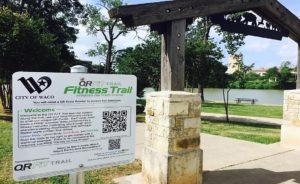 The summer climate and abundance of parks with green meadows make the City of Waco an ideal location for outdoor fitness. On a typical day, the sun is shining, the birds are chirping, and the breeze feels divine! Why confine yourself inside a gym for a workout? The QR Fitness Trail System allows you to replicate many gym exercises in the outdoors and all you need is your smartphone!
The summer climate and abundance of parks with green meadows make the City of Waco an ideal location for outdoor fitness. On a typical day, the sun is shining, the birds are chirping, and the breeze feels divine! Why confine yourself inside a gym for a workout? The QR Fitness Trail System allows you to replicate many gym exercises in the outdoors and all you need is your smartphone!
Through funding made available from the Texas Department of State Health Services and the Texas Healthy Communities grant, the Waco-McLennan County Public Health District and Live Well Waco have partnered with the City of Waco Parks and Recreation Department to have the QR FIT Trail system installed and ready to use in 11 neighborhood parks this summer. The QR Fitness Trail System will provide the perfect opportunity for community residents to lead an active lifestyle without the cost of a gym membership or fitness trainer.
The QR Fitness Trail System has been installed around walking and running trails in 11 parks throughout Waco:
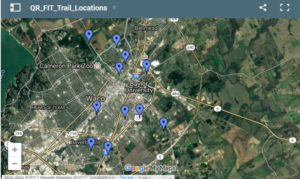 Alta Vista Park
Alta Vista Park- Bells Hill Park
- Bledsoe-Miller Park
- Brazos Park East
- Brooklyn Park
- Council Acres Park
- East Waco Park
- Gurley Park
- Kendrick Park
- Oakwood Park
- Oscar DuConge Park
The QR FIT Trail is a high tech fitness course designed for individuals of all ages. It is comprised of a series of signposts placed along the parks, and each sign post or station features Quick Response or QR codes that link a user’s smartphone to workout instructions and instructional videos. Park visitors will use the camera on their smartphones to scan the QR codes on each sign. Each workout station offers 4 workout options that focus on core, upper body, lower body and flexibility. For the users who may be intimidated by the difficulty of exercises, the fitness system provides users the option to select beginner, intermediate, or advanced. Free QR Code readers are available through smartphone app stores. Also, no additional fitness equipment is necessary in order to perform these exercises.
Alexis is a 27 year-old Waco resident who has set a goal to lose 15 pounds before her sister’s wedding in the next couple of months. Like many others, money is tight for Alexis. She does not have the funds to hire a fitness trainer or pay for a monthly gym membership. Alexis heard an ad about the QR Fitness Trail System while listening to the radio on the way to work one morning, so she decided that she would try the QR Fitness Trail System later that evening. Alexis mentioned that she briefly played volleyball in high school, but she has not dedicated much time to her physical fitness since then. However, since using the QR Fitness Trail System at her local park, Alexis has lost a total of five pounds just within a couple of weeks. When asked how effective has the QR Fit Trail System been, Alexis responded, “I think this is a great tool with a great purpose. It’s quick and easy for me to use, the trainers from the workout videos show me how to actually perform the exercise for my specific body area, and it costs me nothing!” Alexis also stated, “I would love to see more community members use this system, so I plan to invite my friends to use the QR Fitness Trail System so that they can get in shape too!”

In the age of cable television, Facebook, YouTube and Instagram, it’s a great idea to travel beyond the screen or the front door and use your smartphone for something that will benefit you in the long run—like your health! There are many physical and mental benefits of exercising outdoors.
Research has proven that exercise help control and prevent the following:
- Heart disease
- Stroke
- Depression
- High blood pressure
- High cholesterol
- Type 2 diabetes
- Arthritis and much more
Studies have also shown that exercising outdoors can help people think more clearly, burn more calories, increase family time, meet your neighbors and save money. The right amount of fresh air and sunshine can be almost impossible to beat. Don’t let the summer pass you by, get to one of these local parks and get fit!
The QR Fitness Trail System is an awesome way to promote health and fitness in the City of Waco. This system is the best thing since sliced bread! The fitness system allows smartphone users to lose weight, get in shape, explore the neighborhood, experience the outdoors, and enjoy the beauty of Waco. Pick up your smartphone, grab a bottle of water, and head to one of these local parks!
Have questions about the fitness system? Want to show off how you and/or your friends and family us the QR Fitness Trail System? Share your photos and videos with us (@livewellwaco) on social media, and remember to include the hashtag #WacoQRFit.
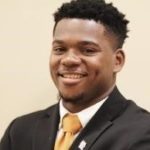 CeRon Ford moved to Waco in August 2013 to attend Baylor University. He received his Bachelors of Science in Public Health, and had the opportunity to intern at the Waco-McLennan County Public Health District as a Live Well Waco intern during his final summer in Waco. CeRon will further his efforts of pursuing public health by attending Morehouse School of Medicine’s Master of Public Health Program in Atlanta, Georgia, In the Fall 2017.
CeRon Ford moved to Waco in August 2013 to attend Baylor University. He received his Bachelors of Science in Public Health, and had the opportunity to intern at the Waco-McLennan County Public Health District as a Live Well Waco intern during his final summer in Waco. CeRon will further his efforts of pursuing public health by attending Morehouse School of Medicine’s Master of Public Health Program in Atlanta, Georgia, In the Fall 2017.
The Act Locally Waco blog publishes posts with a connection to these aspirations for Waco. If you are interested in writing for the Act Locally Waco Blog, please email [email protected] for more information.
Photo Credits: CeRon Ford Photography, Courtesy of Waco-McLennan County Public Health District, 2017
by Sara Beth Stoltzfus
My name is Sara Beth Stoltzfus and I am a case manager at MCH Family Outreach. At MCH Family Outreach, we provide support to families through in-home case management services, parent education and caregiver empowerment groups. Until recently, what we now call our Caregiver Empowerment Groups were only open to relative caregivers (grandparents raising grandchildren, aunts raising nieces and nephews, etc.) I have been facilitating these support groups for almost three years now and as we transition to a new schedule and more inclusive format (all caregivers of kiddos are welcome!), I wanted to reflect on why these groups are so important.
I googled the definition of support, because support is one of the key elements of the groups. Some definitions I found were “to bear all or part of the weight of; hold up,” “give approval, comfort, or encouragement to” and “to be actively interested in and concerned for the success of.”
After reading these definitions, I thought to myself, “Yes! Exactly! This is already happening in our groups.” The caregivers who attend our groups each month are absolutely giving comfort and encouragement to each other. And while no one person is holding all of the weight of another person in the group, all in the group are bearing witness to each other’s joy, struggles and the general craziness of parenthood, listening and holding the space for one another.
I am always delighted when after the hour-long group is done, I see two grandparents exchanging phone numbers to meet up. And while I am bound to confidentiality, I think it is great when a caregiver asks me how someone is doing who has not attended the group in a while. I have witnessed a true concern for the success of others in the group.
One definition of empowerment as defined by Wikipedia is “the capacity of individuals, groups and/or communities to take control of their circumstances, exercise power and achieve their own goals, and the process by which, individually and collectively, they are able to help themselves and others to maximize the quality of their lives.”
I love this definition. When caregivers of children get together to support one another, ultimately the goal is to maximize the quality of their own lives and their children’s lives, individually and collectively. Increasing a caregiver’s power and more importantly, knowledge of their power, is key. A mother who thought she was failing in so many ways will realize that there are plenty of moms who think they are failing too. A grandmother who thought there was no hope for her child with sensory needs realizes there are many other grandmothers with similar kiddos and that there are resources out there for her grandchild. With this new knowledge, she will realize, I CAN do this. I am able to support my child.
In a very independent society, caregivers need support as they also need to support others. Caregivers need a place for vulnerability and tears as well as joy and laughter. Through this mutual support, we hope that caregivers will be empowered, becoming stronger and more confident, in control of their lives.
Our hope is that they would know their own power to create beautiful, connected, empowered children.
We invite anyone caring for a child to come to a Caregiver Empowerment Group. Every new voice in the group is impactful and your story can empower another caregiver.
Caregiver Empowerment Groups will be held on the 2nd Tuesday of September, October and November, one group in the morning from 11am-12pm and one in the evening from 6pm-7pm. The groups will be located at MCH Family Outreach at 1111 Herring Avenue Waco, Texas 76708. Call 254-750-1263 for more information!
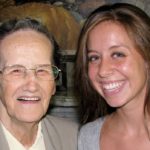 This Act Locally Waco blog post was written by Sara Beth Stoltzfus. Sara Beth is a Social Worker at MCH Family Outreach through the Methodist Children’s Home. Sara Beth is originally from Pennsylvania but has been living in Texas for more than 6 years, 4 of which have been spent in Waco. Sara Beth enjoys spending time with her husband, James, and dog, Bud, as well as with her church community, Hope Fellowship. Sara Beth also enjoys participating in social justice work with other Wacoans.
This Act Locally Waco blog post was written by Sara Beth Stoltzfus. Sara Beth is a Social Worker at MCH Family Outreach through the Methodist Children’s Home. Sara Beth is originally from Pennsylvania but has been living in Texas for more than 6 years, 4 of which have been spent in Waco. Sara Beth enjoys spending time with her husband, James, and dog, Bud, as well as with her church community, Hope Fellowship. Sara Beth also enjoys participating in social justice work with other Wacoans.
The Act Locally Waco blog publishes posts with a connection to these aspirations for Waco. If you are interested in writing for the Act Locally Waco Blog, please email [email protected] for more information.
By Peaches Henry
To be clear, this is not a Right or Left, Republican or Democratic, North or South, or Black or White issue. This is a matter of right or wrong. We are confronted with a life and death moral dilemma. We must decide whether to take a stand against those who advocate racism, anti-Semitism, and xenophobia. A united body of Blacks, whites, Christians, Jews, Muslims, Democrats, Republicans, and like-minded individuals willing to reject purveyors of hate will defeat their attempt to take this country back to a very dark place.
We must publicly denounce these attitudes and behavior. To remain silent is to condone it. To equivocate is to give it cover. This must not be the message of our nation or of our leaders.
The Waco NAACP condemns the blatant, heinous acts of hate groups and so too should those who respect our country’s most treasured values. To many African-Americans, Jews, and others, the images of armed Ku Klux Klanners, white nationalists, and neo-Nazis marching in Charlottesville seemed like a horrific nightmare that recalled decades of intimidation, violence, and murder. Tragically, those scenes were all too real as these groups gathered in a so-called Unite the Right rally to “take America back.” In 2017, carrying guns, knives, and other weapons, the KKK marched on Charlottesville. White supremacists with torches surrounded a church filled with African-American ministers and their allies. Intending to evoke the 1930s Hitler Youth marches, Neo-Nazis conducted a torchlit parade through the campus of the University of Virginia shouting Nazi slogans: “Blood and soil!” “You will not replace us!” “Jews will not replace us!” Minus the hoods of the twentieth century, these mostly white young men instead proudly exposed their faces and wore white polo shirts and khaki pants. Former KKK leader David Duke and white nationalist leader Richard Spencer were conspicuously present at the events.
The intimidation of the parade and march was followed up the next day by actual violence. White supremacists savagely beat African-American Deandre Harris in a parking lot. Two state troopers, who were monitoring the event from a helicopter, crashed and died. The KKK, white nationalists, and neo-Nazis armed with shields and wooden clubs charged and attacked a group of counter-protestors. The protestors fought back. Ultimately, a white nationalist (allegedly) deliberately drove his car into a crowd of counter-protestors killing Heather Heyer and wounding 19 others.
The president’s repeated refusal to unequivocally condemn these hate groups demonstrably serves to embolden them. The president must be called out for failing to show moral leadership. To do so is not a partisan tactic. It is simply right. Casting blame on the counter-protestors, who chose to defend themselves, is reminiscent of charges brought against civil rights marchers in the 1960s who were called violent when they were attacked by white citizens, law enforcement, and the KKK. The president must not give quarter to the KKK, white supremacists, and neo-Nazis through ambiguous rhetoric or false moral equivalency. African-Americans, indeed all Americans, need the president to unreservedly side with us against the purveyors of hate. Period.
We must all stand together against those who are uniting for hate. Make no mistake. Richard Spencer and his cohorts will not stop with Charlottesville. While Texas A & M has prevented a rally “inspired by [Charlottesville’s] “Unite the Right” event, that will probably be a temporary situation. The hate groups are coming.
The racist damage at Willow Grove Baptist Church demonstrates that they are already among us. Those who would minimize the incident at Willow Grove as teenaged vandalism, misjudge the case. If the damage was perpetrated by teenagers, that is both tragic and dangerous. Tragic, because it means young people have imbibed racist, bigoted ideas. Dangerous, because youth can be violently impulsive. We must engage our youth and teach them that the KKK terrorized and lynched African-Americans and burned their churches for decades. We must teach them that the Nazis exterminated homosexuals, the intellectually disabled, gypsies, and six million Jews. And we must love them, because love transforms and redeems. However, to reclaim these young people we must recognize that evil is among us.
My own personal experience proves that hate groups are already here. On Sunday July 16, while sitting in church, I started to open the Bible app on my phone and was inundated with racist text messages calling me “nigger,” likening me to images of monkeys, declaring that the texter had “the power to keep niggers down,” and referring to the “NAAC Pee Pee.” [And no, I will not use the “n-word.” The writer of those texts did not call me the “n-word.” He repeatedly called me “nigger.”]
This moment in our country requires us to face hard truths about our racial history. For instance, we must face the fact that most of the Civil War statues and memorials around this country were erected with the express purpose of re-asserting white supremacy over African-Americans after Reconstruction, during the Jim Crow era, and after the Civil Rights Movement. Some may argue that they were erected to recognize our history. Yes, the Civil War is a part of our history. It is the history of people who left the United States and waged war against it in order to keep Black people enslaved. That objective was written into the constitution of the Confederacy. Some may argue that the Civil War was fought over states’ rights. States’ rights to do what: to enslave Black people. The Nazi era is a part of Germany’s history. You do not see statues of Hitler sprinkled around that country. Whether these statues remain, come down, or are removed to museums, they represent a flashpoint of conscience which this country must confront. The purveyors of hate have made their position clear. The rest of us must decide which side of history we are on.
The Waco NAACP will continue to be steadfast and immovable in the fight against discrimination, prejudice and hatred. The Waco NAACP is prepared to meet, march, and hold rallies that counter the racist, white supremacists ideologies that these groups espouse. The Waco NAACP will persist until we drive out racism and racist actions. We will accept all people of good will who are willing to stand with us. And we are not afraid.
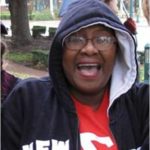 Dr. Peaches Henry is a graduate of the University of Texas. She received both her master’s and doctorate in English from Columbia University in New York. She is an English Professor at McLennan County Community College. She is the current president of the Waco McLennan County branch of the NAACP. Join and support the NAACP with your dollars and your resources: waconaacp.org.
Dr. Peaches Henry is a graduate of the University of Texas. She received both her master’s and doctorate in English from Columbia University in New York. She is an English Professor at McLennan County Community College. She is the current president of the Waco McLennan County branch of the NAACP. Join and support the NAACP with your dollars and your resources: waconaacp.org.
By Sarah Miller
When people hear that I’m a hospice chaplain, they often say “OH that sounds so hard!” or they immediately tell me their death story. Most people have a story about someone in their life who has passed away. After telling me their story, they thank me for listening and for being curious about their loss. People LOVE to share their experience.
Our culture prefers to talk about newborn babies and new life but not so much about end of life care and death. I lecture on death and dying at Baylor University and have noticed that even college students have often been connected to someone who has died or have walked with a friend who has lost a loved one. I think it is important for stories to be heard.
Since getting people to talk about death before a crisis happens is one of my interests, I decided to offer two events to the Waco community this summer. In May, I hosted a Death Café at the Good Neighbor House. Death Café was starting in England by a man named Jon Underwood. He wanted to create a space where people, often strangers, would get together to drink tea, eat cake, and discuss death. The objective of Death Café is “to increase awareness of death with a view to helping others make the most of their finite lives.” I wasn’t quite sure what to expect when I invited anyone interested to show up, eat cake, and talk about death with me. I was delighted by this gathering of kind, curious Wacoans who arrived ready to talk about all things death. A death positive Waco facebook group was created after this event and has sparked some great conversations.
In August, another chaplain and I hosted a Death Over Dinner (again at the Good Neighbor House). The concept is quite incredible. Guests meet for dinner and talk about end of life issues. The organization recommends listening, reading, and watching various stories or articles before the dinner and offers questions to guide the evening. I enjoyed getting to hear from people from a variety of backgrounds and hear what is meaningful to them. More death related events will be planned in the upcoming months. I would love for more Wacoans to tell their stories and also to ask questions and process death topics in safe spaces.
Due to the nature of my job, I’m asked the same questions over and over so thought the blog readers might have interest in my answers. The most popular question is this: How can you work with dying people and grieving families and not get burned out? Compassion fatigue is a real thing! I do a few things to prevent burn out. I do at least 3-4 yoga classes per week. Making my body and breath work together in a yoga class helps tremendously with stress relief. I also spend time with my husband, adorable son, and lots of friends. I’m an extrovert so need to have intentional, fun space with people who are life-giving to me. I also journal after a hard day and use my coworkers to process grief when a favorite patient dies or if I’m feeling particularly sad. Another question I get asked often is what books or websites do I recommend. I think everyone should read Being Mortal by Dr. Atul Gawande and When Breath Becomes Air by Dr. Paul Kalanithi. The websites I use frequently are: www.theconversationproject.org, www.agingwithdignity.org, www.caringinfo.org, www.compassionandchoices.org, www.griefshare.org.
Talking about death and end of life care can be a little scary initially but I recommend families and friends do this when possible. It is much better to know in advance what your loved ones want. If anyone wants more information on upcoming death-related events, please go to Death Positive Waco on Facebook.
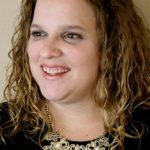 Sarah Miller has lived in Waco for the past fifteen years and is a chaplain with SouthernCare Hospice. She loves encouraging patients and families at the end of life. She can be found most nights doing yoga at the Yoga Pod or hanging out with her husband and delightful five year old.
Sarah Miller has lived in Waco for the past fifteen years and is a chaplain with SouthernCare Hospice. She loves encouraging patients and families at the end of life. She can be found most nights doing yoga at the Yoga Pod or hanging out with her husband and delightful five year old.
